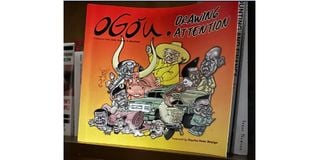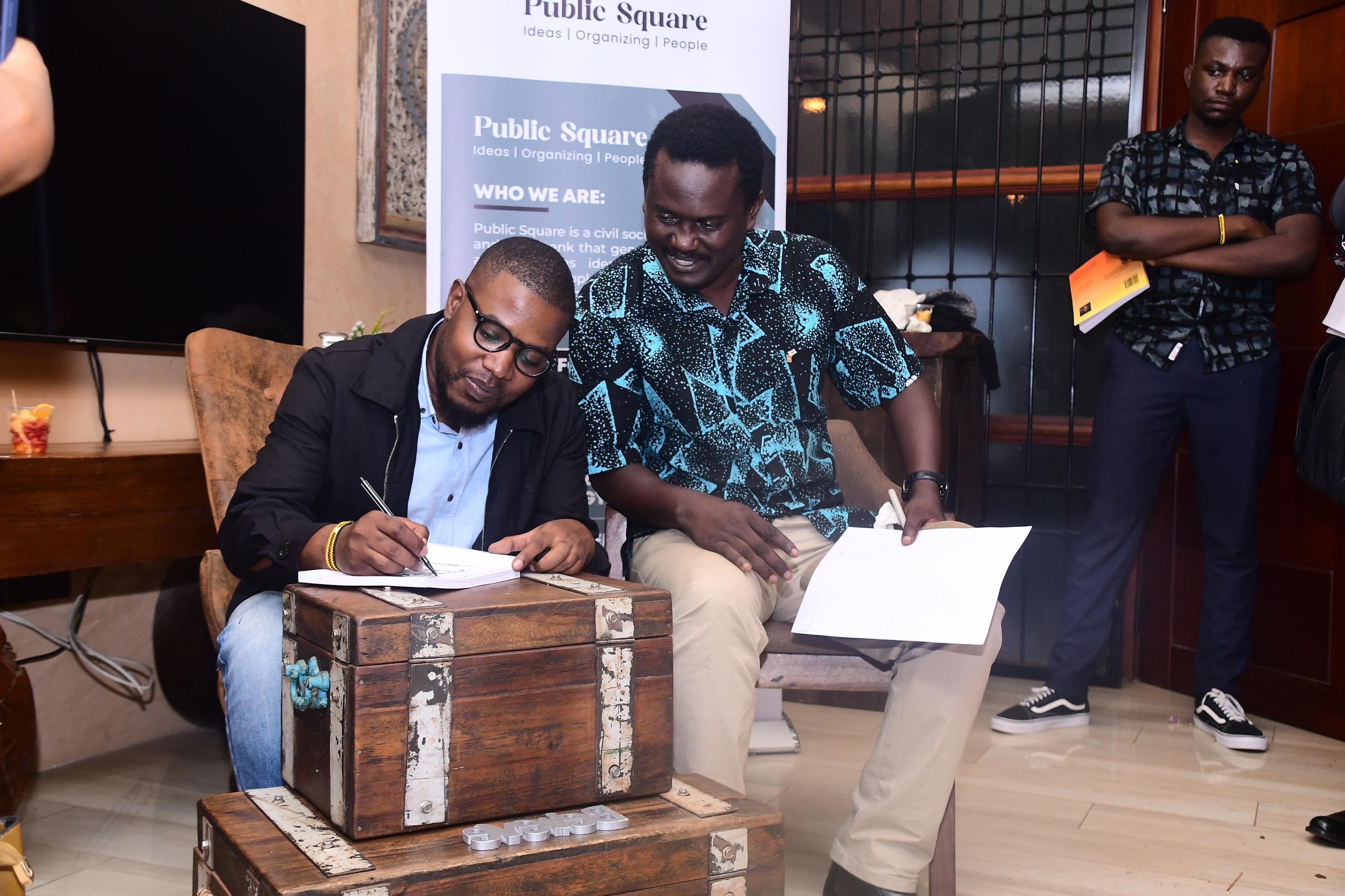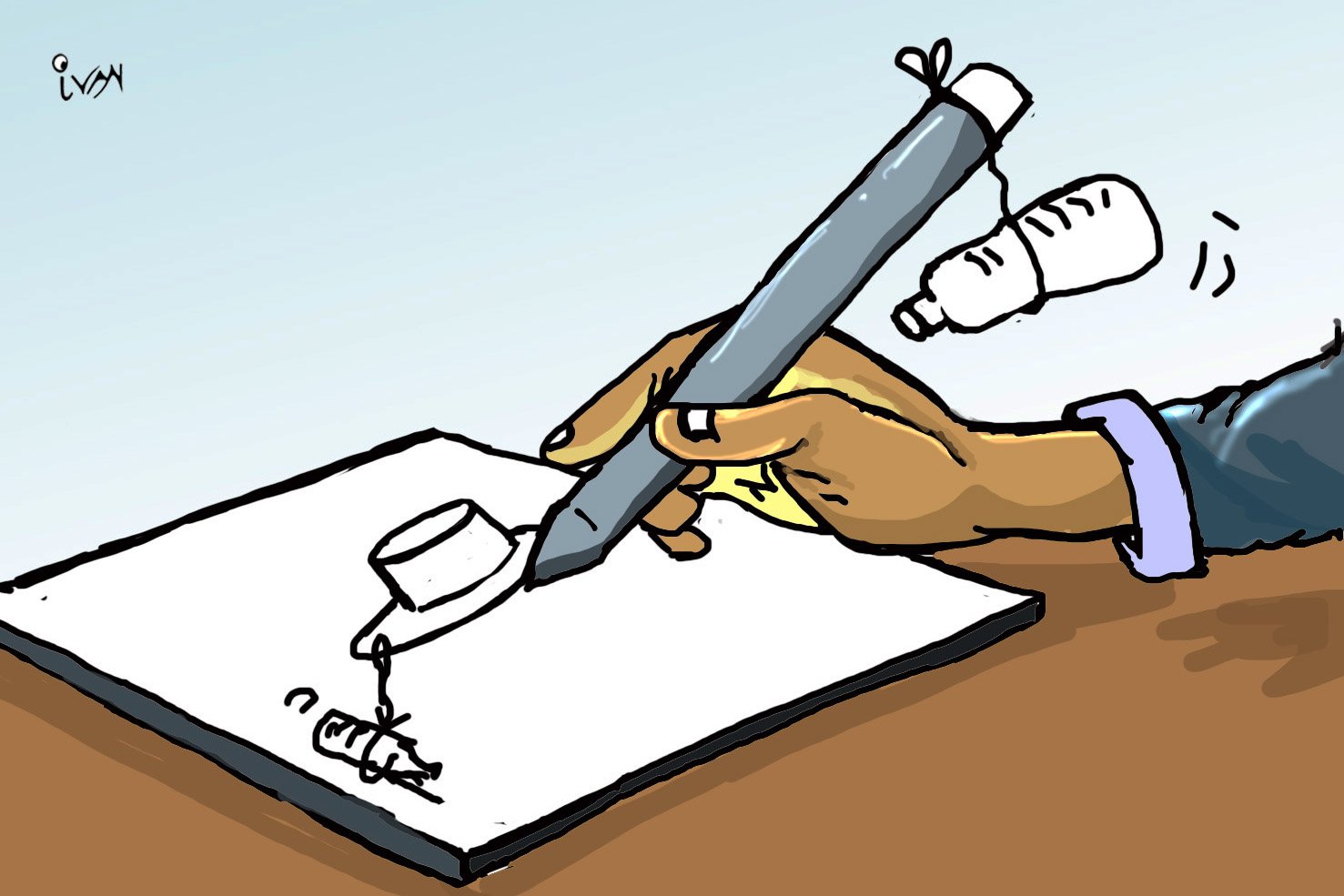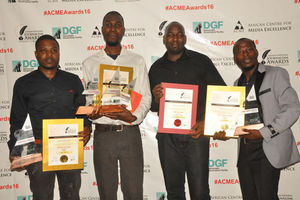
The book is divided into 11 chapters that run in chronological order from 1986 when President Museveni took power to date
One of Uganda’s leading political cartoonists Chrisogon Atukwasize, aka Ogon, has published his first collection of humorous and dramatic cartoons titled Drawing Attention. His body of work, spanning 194 pages, lampoons the mighty, powerful and ordinary citizens for their various misdeeds.
Published in 2024 with generous support from Kuonyesha Art Fund, cartoons carried in this newspaper are, in the main, constitutive of the body of work. The collection is divided into 11 chapters that run in chronological order from 1986 when President Museveni took power to date.
The first cartoon, essentially the first chapter, titled In 1986… shows Museveni holding a Bible in his right hand, saying: “So help me, guard.” He is closely surrounded by mean-looking soldiers who are armed to the teeth.
The next strip is about the [in]famous National Resistance Movement (NRM) 10 Point Programme. It shows the elaborate chart in 1986, and how it looks like in 2023 with a rubber that has erased each point, leaving virtually nothing. The other cartoons in this chapter depict Mr Museveni the illusionist and his failure to bring about the fundamental change he promised, eradicate poverty, poor health and insecurity, and maladministration in his 38-year and counting grip on power.
When the National Resistance Army (NRA) of President Museveni took over power in 1986, following a protracted guerrilla war, Uganda’s GDP was $3.9 billion.
“This has formed the basis of President Museveni’s speeches over the last 40 years. 1986 has since turned into the benchmark for everything in his government. Those born after 1986 would assume that Uganda did not exist before the year if not for other bits of reminders about the swine and pigs of the years before 1986,” Ogon writes in the first chapter.
“Mr Museveni is always quick to remind us of how there has been progress across all spheres of life. He attributes any challenges to the swine of the past and the pigs left in today’s Uganda. It is almost as if every development today is only because of his government. He could tell you that in 1986, Jose Chameleone was not there and Sheebah was not even a dream but that thanks to his visionary leadership, even Fresh Kid was able to dream big,” Ogon adds.
Wordplay
Chapter 2 titled Damn-O-Cracy! drips with sarcasm, with Ogon noting that selective amnesia has led many to forget that not a single election was held between 1971 and 1979 when Idi Amin was in the saddle.
“Back in the bush, nobody complained [that] the people from a certain region make the majority of liberators. But now they whine about how the same region has the majority persons in government here or there. That is what the West has corrupted you into thinking,” he writes.
He adds: “The truth is that rigging, stealing votes at any election—that is unacceptable. The pigs were doing that before we defeated them and we must defeat those of today who are trying to pick up the same bad manners of rigging and using the Western template to define Africa’s problems. We know what is best for us.”
Ogon continues with the wordplay, at least for the title for the third chapter—Such a Mace—that zooms in on the corruption scandals that have blighted the current Parliament. He describes “such a surreal ironic mess” of the House whose “building opens right into the main gate of the National Theatre.”
“The roles of the two institutions have become so closely intertwined that it is difficult to forgive Parliament for keeping its mace at the theatre,” he writes.
It’s the economy, stupid
In the chapter “It’s on a Siuuuuuuuuu!”, Ogon makes fun of the sustenance of Uganda’s economy, the Executive spendthrift penchant, and Finance minister Matia Kasaija’s famous blurt “economy suiiiiii”.
Ogon says his cartoon depicting the late Governor of Bank of Uganda, Emmanuel Tumusiime-Mutebile, running after a wheel that had come off his vehicle that is Uganda was one of the ages.
“The vehicle is in such a state that there could not have been a better relation to Uganda. And the wheel is actually a coin, the legal tender. This was (still is) the typical situation that when Kasaija said the economy was suiiii, you just saw it all in a flash,” he writes.
Ogon then addresses how Mr Museveni has disorganised the Opposition and allegedly bought off its leaders in the chapter Off-Position. He’s moved to come to the conclusion that the political arena does not belong to anyone but the man with a hurt (hat).

One of Uganda’s leading political cartoonists Chrisogon Atukwasize, aka Ogon
Still with Mr Museveni, the subject of succession politics comes up in the chapter Jump That Queue. According to Ogon, one needs a proper vision to tell a tiger apart from a leopard. Only one man has had such vision for a good half-century.
There had to be a chapter titled Uganda Zaabu!, and in this one Ogon unpacks money-making schemes ranging from the “profiteering Man-a-God” to those who have conned the President in the name of making so-called scientific innovations.
“One of the key strengths of editorial cartoons is their ability to distil complex ideas and events into a single, impactful image,” the Katikkiro (Prime Minister) of Buganda Kingdom, Mr Charles Peter Mayiga, writes in the foreword of the book, adding, “Through clever symbolism, caricature, and visual metaphors, cartoonists can capture the essence of a story and covey their perspective in a concise and memorable way. This makes cartoons accessible to a wide audience, including those who may not engage with lengthy articles or news reportage.”
DM crosshead: Holding power accountable
Katikkiro Mayiga hails Ogon for “using wit and irony […] to critique powerful individuals, institutions, and policies.” It is a point that Jimmy Spire Ssentongo, another cartoonist, agrees with, noting that “Ogon’s genius lies in detail” with “each piece from him communicat[ing] armistice mastery and depth of thought.”
On his part John Curtis, the founder of Africartoons, notes: “Ogon’s splendid collection is testimony to the fact that editorial cartooning is very much alive and well on the continent of Africa.”
Ogon, who read a lot of newspapers growing up, moves swiftly to distance himself from activism. He merely uses “cartooning to express myself and views.” What people have labelled protest art should be seen as nothing more than “visual commentary.” Cartoons in a newspaper, he adds, “provide a break for the reader, from the usual conventional way of news reportage.”
The cartoon you see in the newsprint is the product of a creative process that “starts with reading and understanding a story.” It is then, adds Ogon, “followed by brainstorming.” He then draws “sets of thumbnail quick sketches of varied representation after which I select the ‘winning’ concept.” Thereafter, he gets to drawing with, he discloses, “a pencil, followed by inking and finally scan[s] to colour using a computer.”
“Of late, the Ugandan audience has picked interest in cartooning. I may not be able to explain why this is so,” he says, adding, “The public reception and interest towards my work has grown over the years. I hope it continues like that.”
Reaction to his cartoons
When asked if he has received enragement from some government officials, Ogon says: “Yes I have. And not just government figures, some Opposition leaders too have not found some of my works amusing...and they at all occasions expressed their enragement through my editors. There’s one that reported me to CID for ‘handling.’”
On whether he has had public figures that have appreciated the way he presented them in his cartoons, Ogon responds: “Yes. And those are quite many. From musicians to religious leaders to security officers. They may not necessarily like how they are portrayed but they pass on messages of appreciation of the craft. Sometimes it is not just them but their kin or friends.”
Asked if there are any of his cartoons that have annoyed some people and they have confronted or threatened him, Ogon says: “Yes. Quite a number of them and all of them are public figures. They have blocked me from accessing their socials, often in the wake of cartoons about them. Some even call to court you. I may not be able to share their names and profiles for obvious reasons.”
Asked what messages his caricatures convey, Ogon says: “Wit, humour and detail. Most of my artworks are detailed on purpose. I aim for the reader to study deeply the cartoon. Beyond the laughter or frowns.”
Asked which cartoons of his have generated a lot of debate either those in this newspaper or those he posts on social media, Ogon replies: “A good number of them generate debate but mostly amplified by social media.”
One cartoon comes to mind when asked which one has gone viral. The one, offers Ogon, “of President Museveni being snubbed by Kenya Airways back in 2015.”
The man who loves sketching public figures also gets a great thrill out of road trips as well as “watching soccer and basketball”. He is “an avid SC Villa and Man United supporter”.
“I used to read the Bible especially. I now prefer binge-watching documentaries and music videos on YouTube. Once in a while, tea with friends at Lugogo,” he added.








